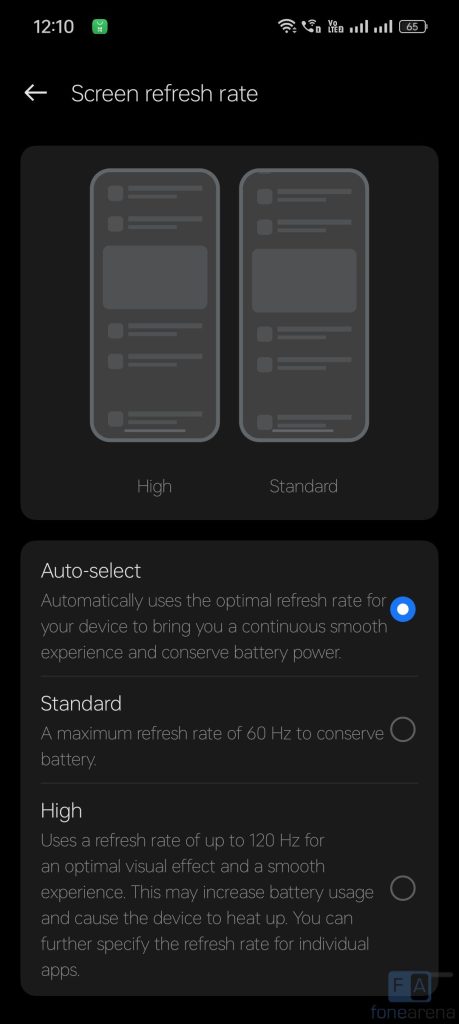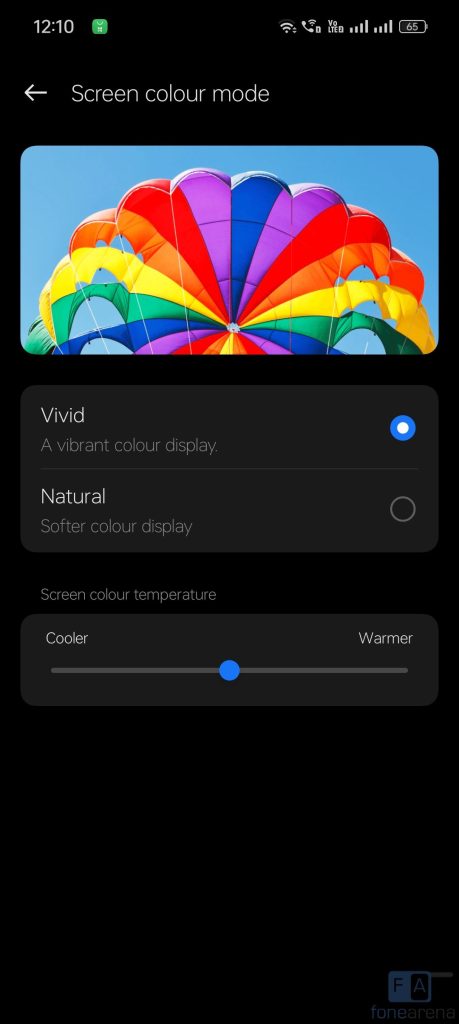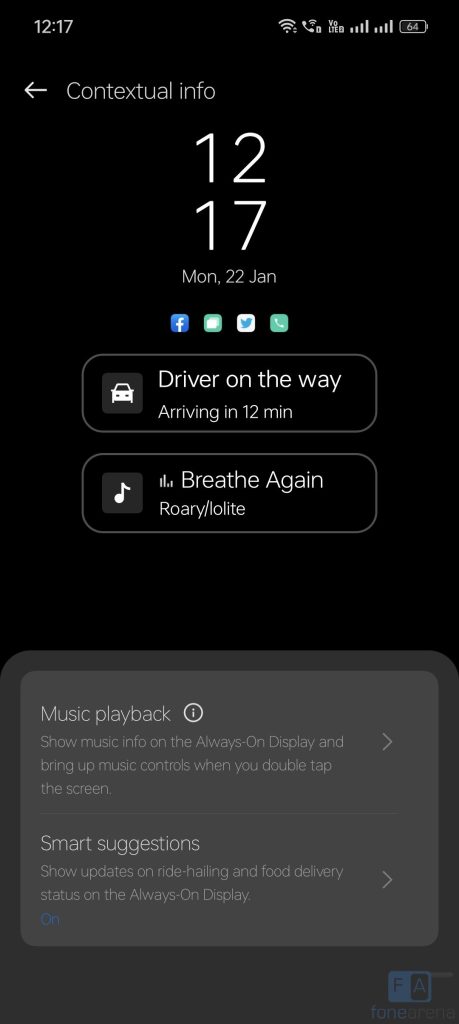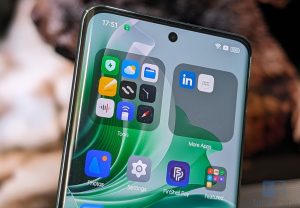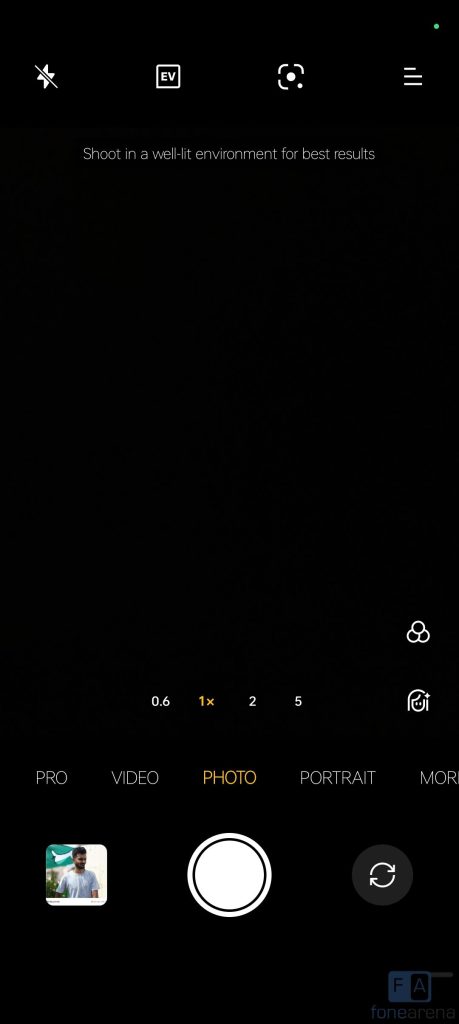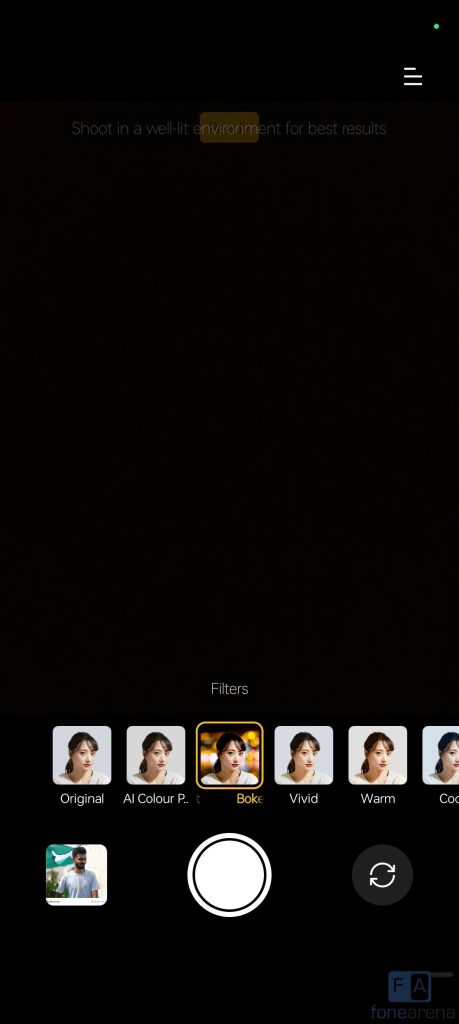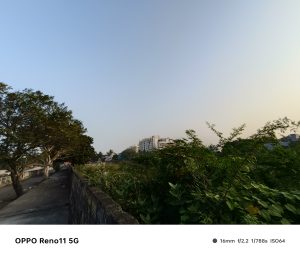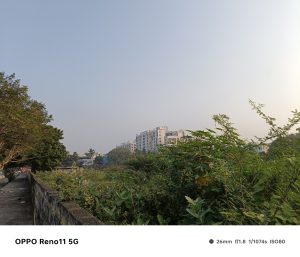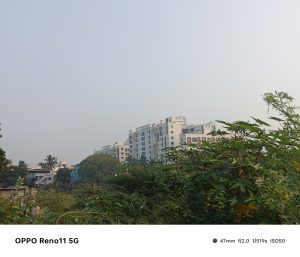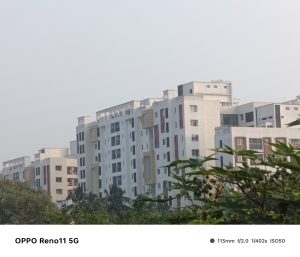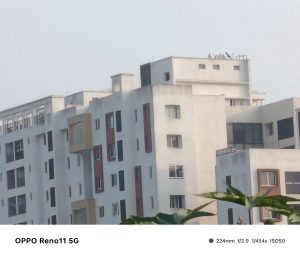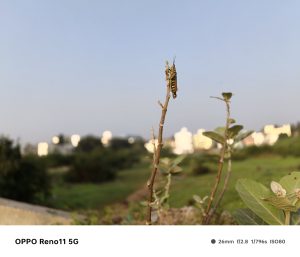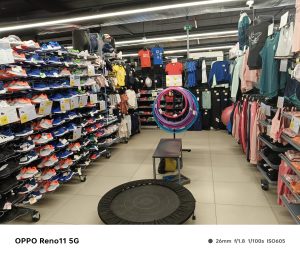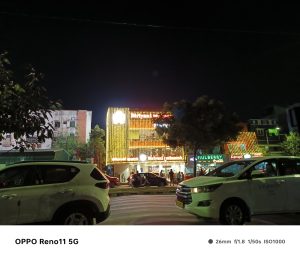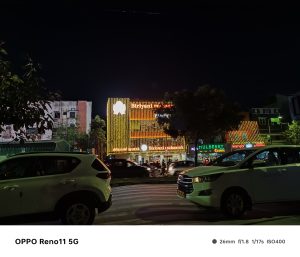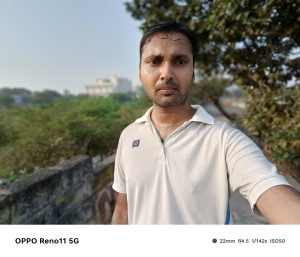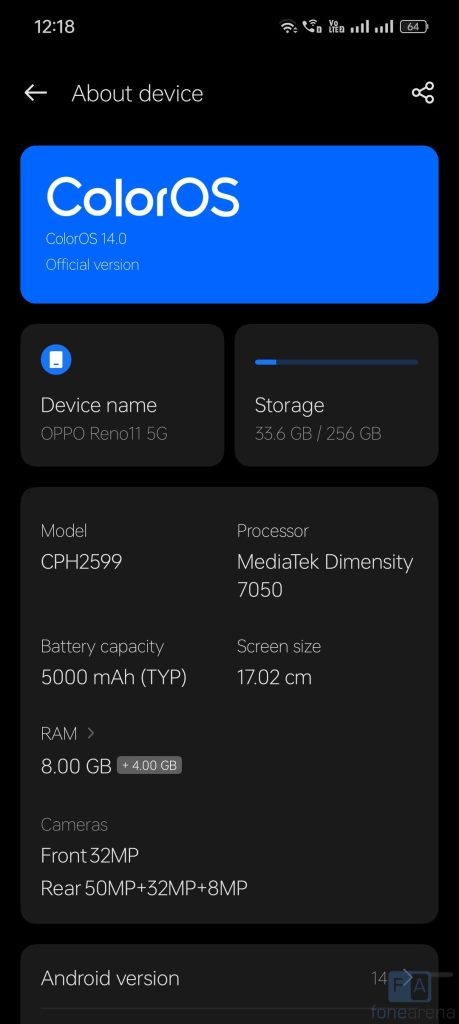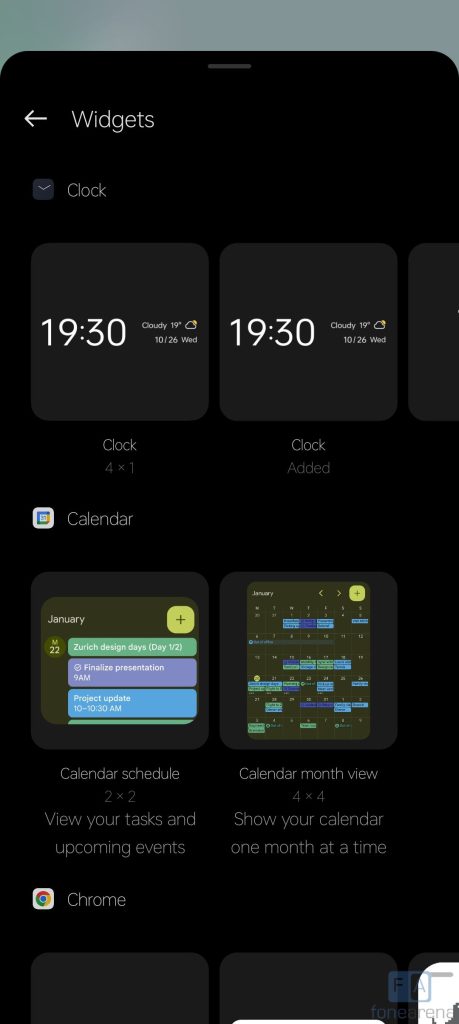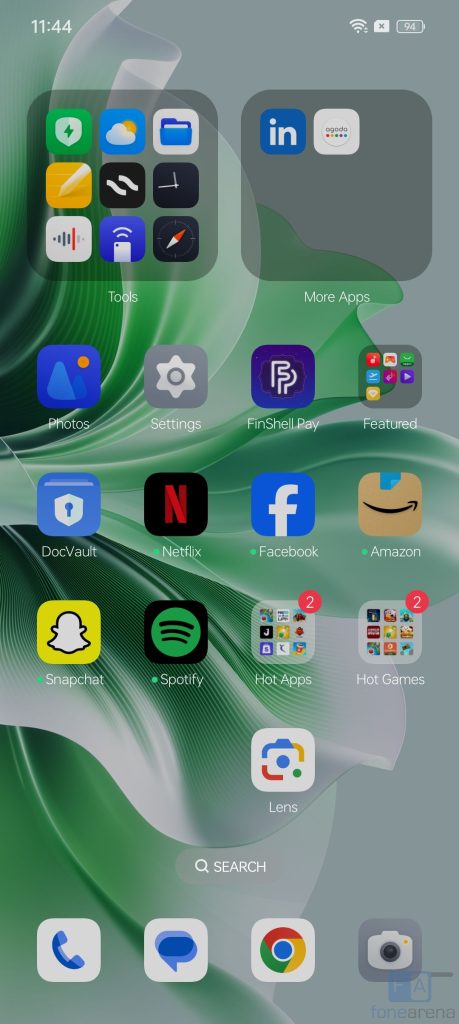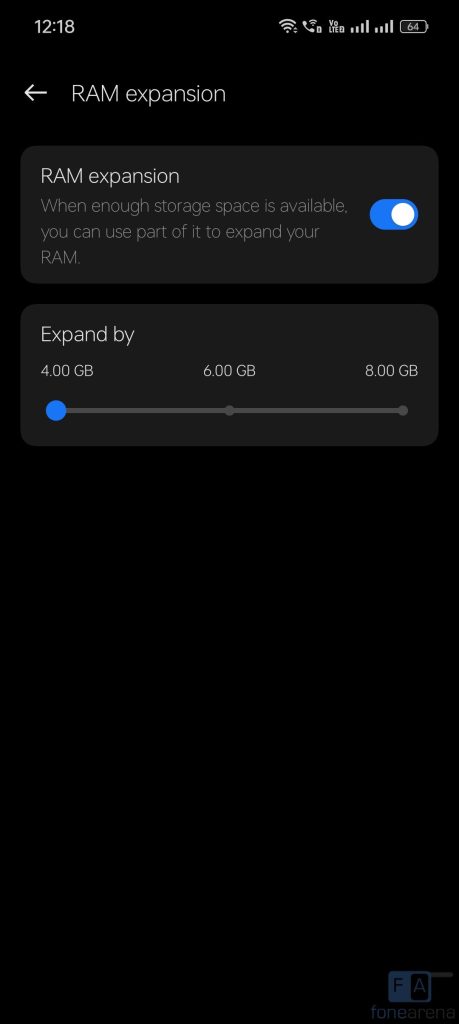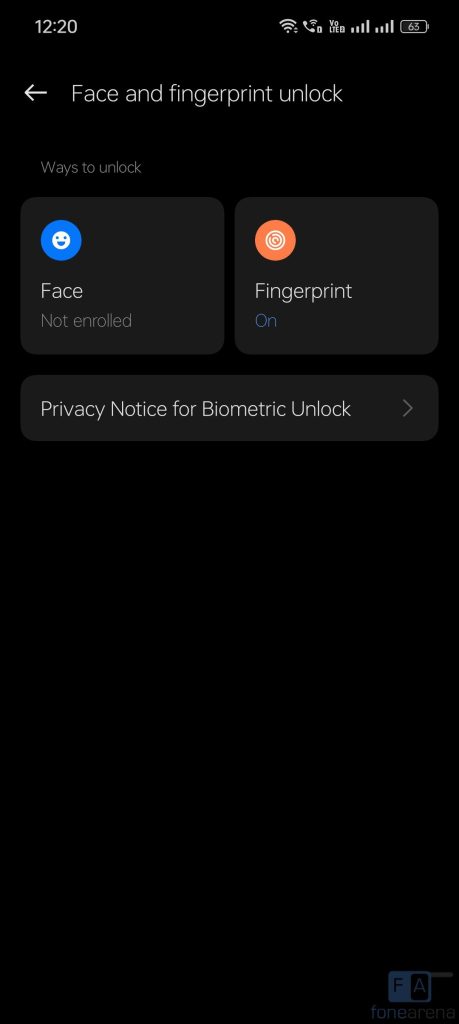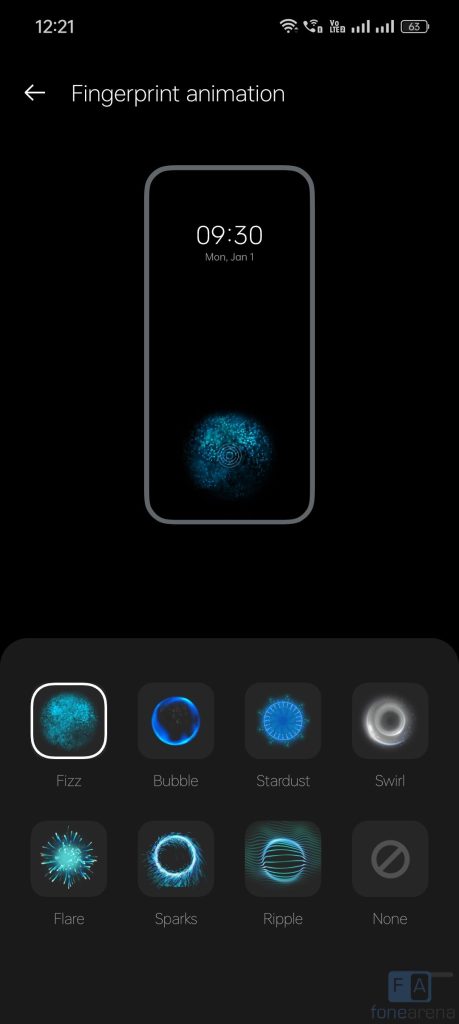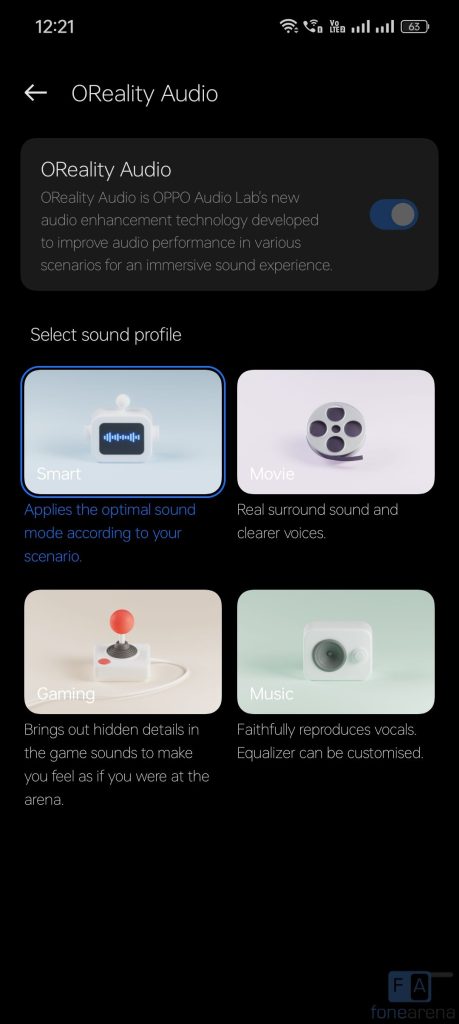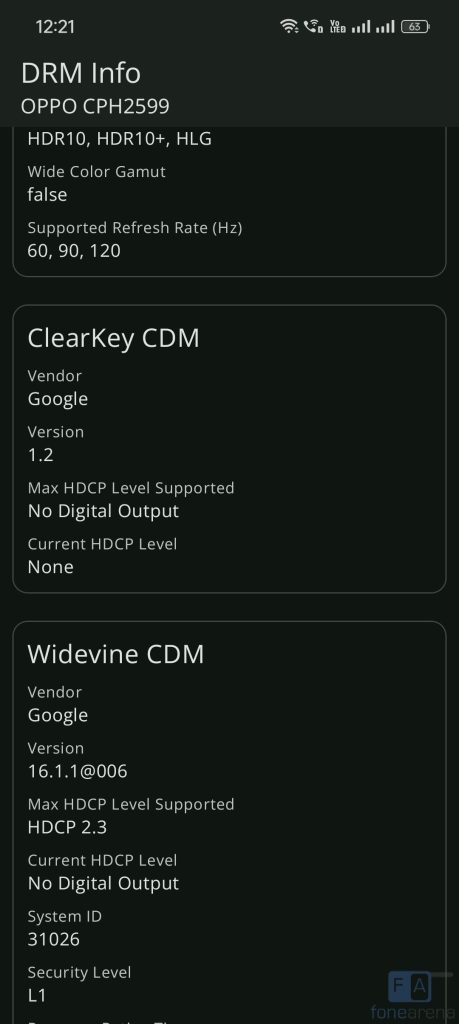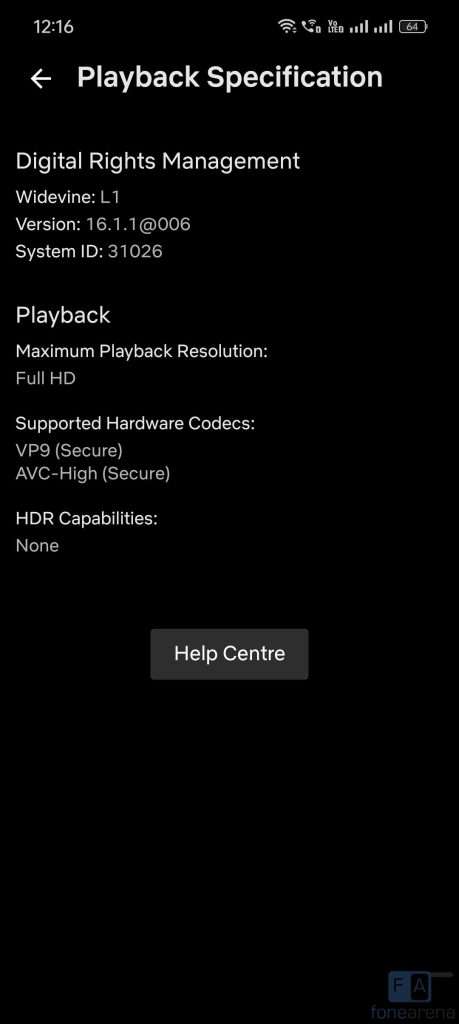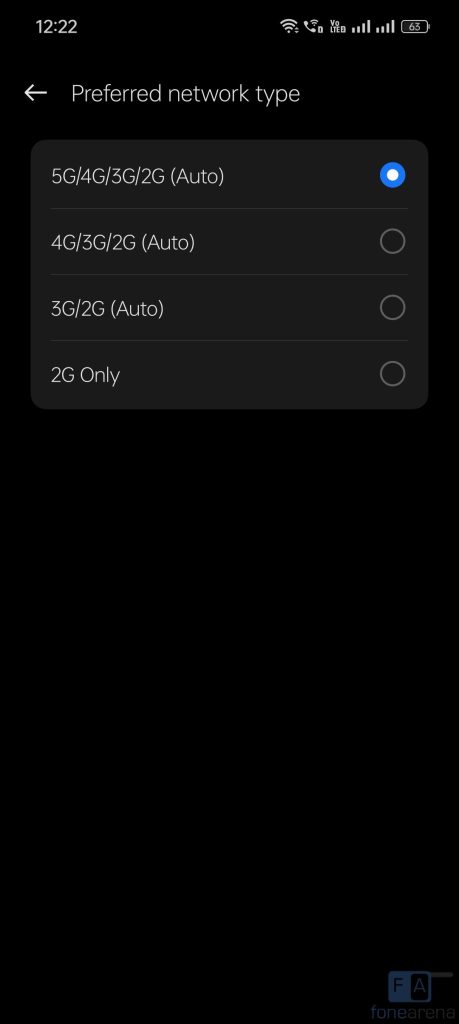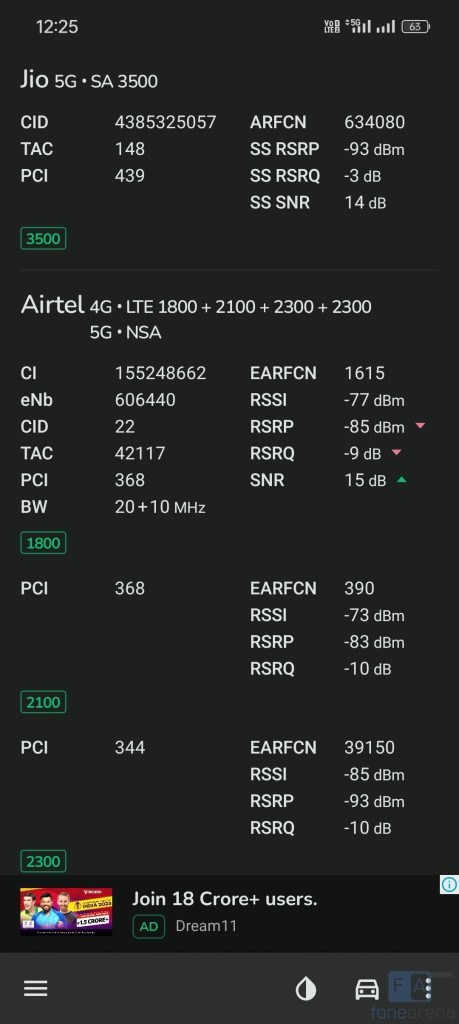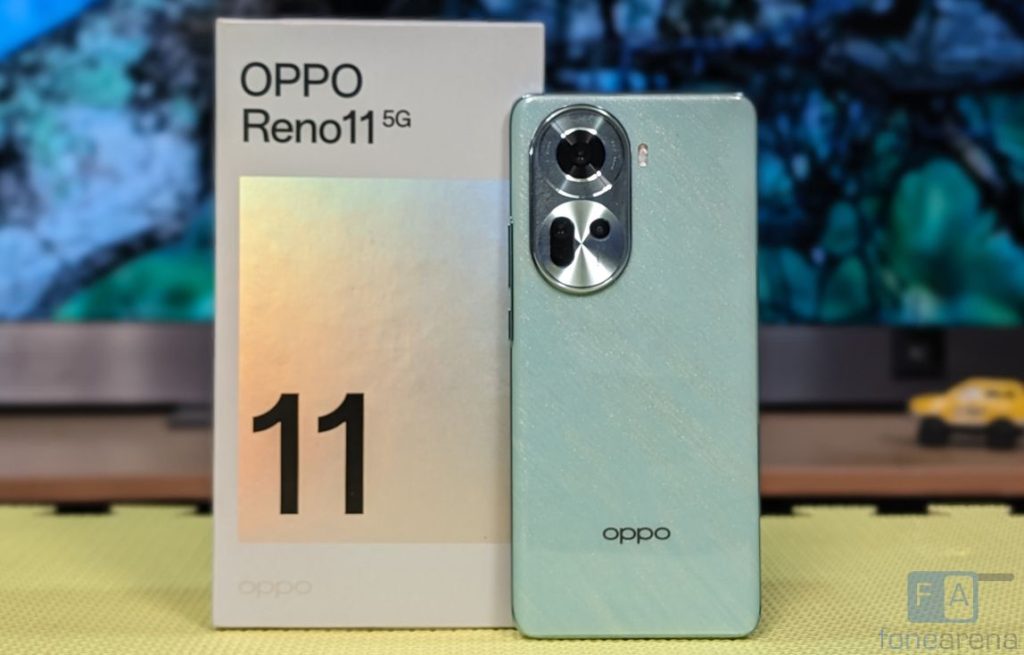
OPPO launched the Reno11 series smartphones in India earlier this week. The company is launching only the Reno11 and Reno 11 Pro, in the country. This has a similar AMOLED screen, same SoC, battery, but replaces the main camera and has a new design. Is this worth the price, which is also the same as the Reno10? Let us dive into the review to find out.
| Box Contents |
| Camera |
| Battery Life |
| Conclusion |
Box Contents
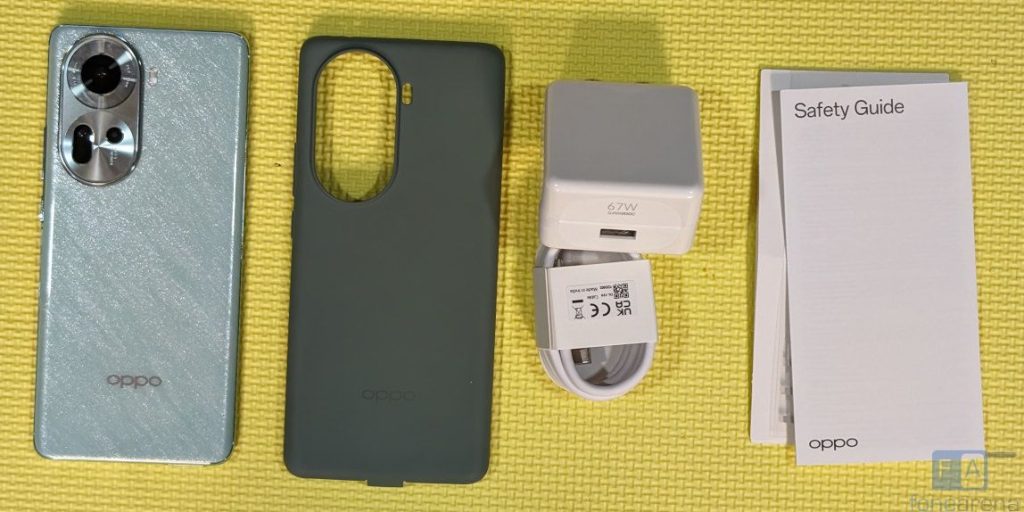
- OPPO Reno11 8GB + 256GB in Wave Green colour
- 67W SuperVOOC fast charger
- USB Type-C cable
- Protective case
- SIM Ejector tool
- User guide
Display, Hardware and Design

The OPPO Reno11 sports a 6.7-inch (2412 x 1080 pixels) FHD+ curved AMOLED display with 120Hz refresh rate which is adaptive, so it can switch to 120Hz/90Hz/60Hz based on the content.
The display is bright since it has up to 950 nits peak brightness, also offers different levels of brightness adjustment. It offers good colour output since it has 100% DCI-P3 color gamut, and the sunlight legibility is good as well. You can select from vivid, Natural and Pro screen colour modes.
The phone doesn’t have a notification LED, but this has an always-on-display that shows contextual info and notifications all day or as per schedule. There is also music playback option in the always-on-display with the Spotify integration, and there is also Zomato and Swiggy integration to show order details on your lock screen.
The phone has ultra narrow bezels with 1.57mm side bezels, making it compact to hold. It has X-axis linear vibration motor.
The phone has a tiny punch-hole that houses a 32-megapixel camera. Above the display, there is an earpiece on the top edge that doubles up as a secondary speaker. It has an in-display fingerprint scanner.
Coming to the button placements and ports, the power button is present on the right side along with the volume rockers. There is nothing on the left. The Hybrid SIM slot, primary microphone, USB Type-C port and the loudspeaker grill are present on the bottom. The secondary microphone is on the top, along with a speaker vent and an IR blaster.
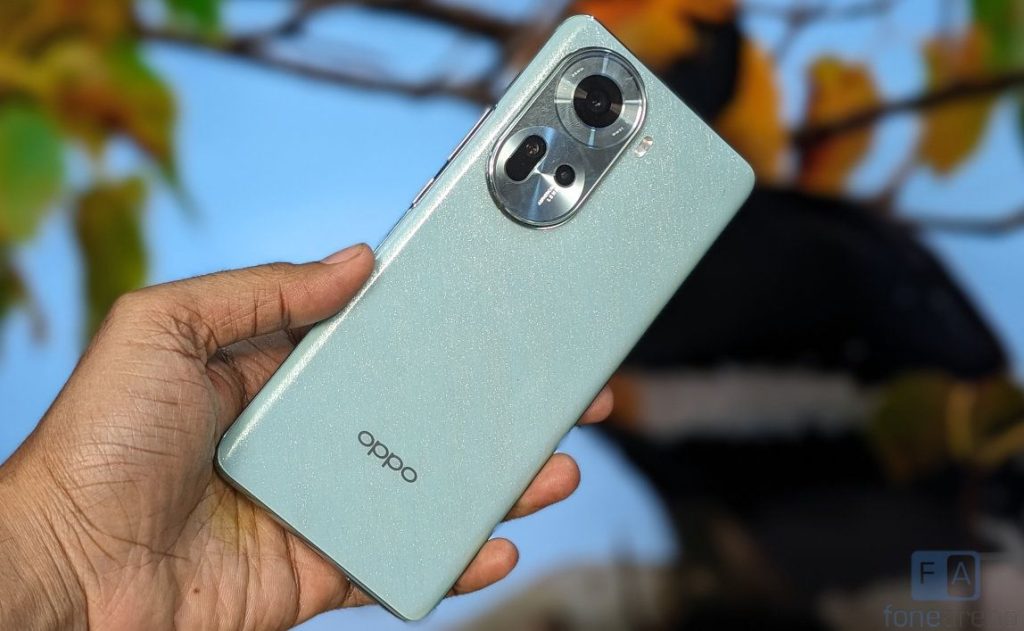
The phone has a 3D curved design. The wave green colour that we have is 8.04mm thick and the Rock Grey is just 7.99mm thick. The Green colour we have has a silk and metal sequins to give the back cover a sparkling, flowing texture, in Wave Green, Reno11 conjures images of green sea waves under a clear sky with its Shimmering Silk Design. To achieve this elegant style, OPPO said that it has pioneered a new technique of pattern transfer from natural fabric, adding an organic authenticity to Reno11’s aesthetic.
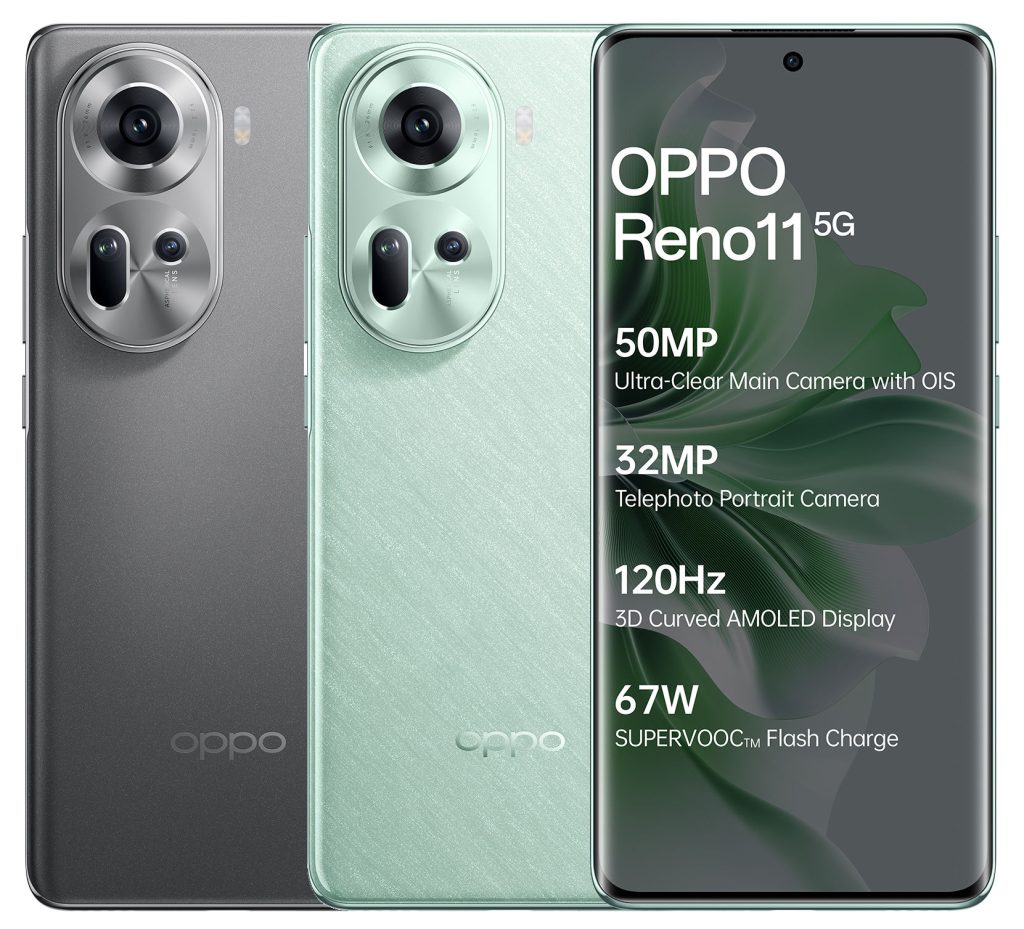
The Rock Grey has layers of bright and soft silver-grey glitter when held up to the light, like soft sunlight falling on the rocks along the shoreline. Manufactured with the exclusive OPPO Glow process, the tiny sparkling crystals are etched at the microscopic level to create a finish that not only sparkles, but also appears soft and smooth.
Camera
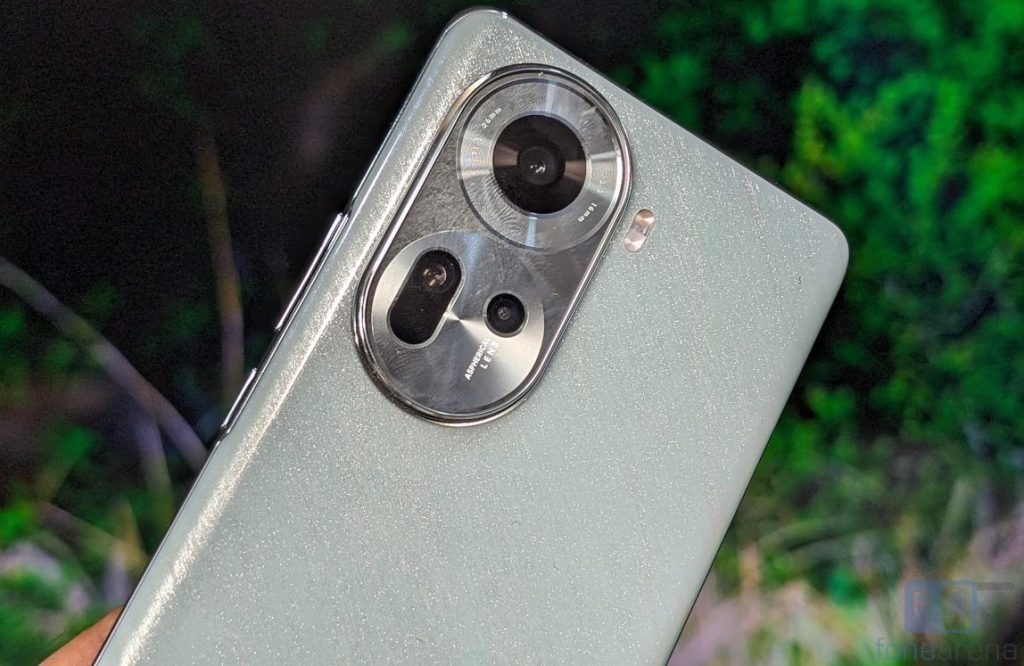
- 50MP main camera with 1/1.95″ Sony LYT600 sensor, ƒ/1.8 aperture, OIS,
- 8MP ultra-wide camera with Sony IMX355 sensor, ƒ/2.2 aperture
- 32MP telephoto camera with Sony IMX709 sensor, ƒ/2.0 aperture, 2x optical zoom
- 32MP front camera with OmniVision OV32C sensor, ƒ/2.4 aperture
The camera UI in the ColorOS 14 is familiar. There is Pro mode, Extra HD, Panorma, Macro, Flim, Slo-mo, Time-Lapse and Dual-View video. There is Bokeh Flare portrait option for photos, AI color portrait and bokeh flare portrait for video. The rear camera offers 12.5MP output after pixel binning, and the front camera images are 16MP in size.
Daylight shots were decent, thanks to the new 50MP sensor, and the dynamic range is better with auto HDR. This is better than the Reno10, but the Reno11 Pro does a better job since it has a bigger sensor. There is AI mode which recognizes different photo scenes and automatically adjusts camera settings to make boost the colours. 2X is good, but as you zoom in you lose details even though you get up to 20x digital zoom. There is a 8MP ultra-wide camera which is also good.
The portrait mode is good. Low light shots are good with a lot of details and less noise. The night mode is useful, but it takes a few seconds to process. There is also a tripod mode. The 32MP auto front camera does a good job. The bokeh shots good with decent edge detection.
Check out the camera samples
It can record videos in up to 4K 30 fps, slow motion 1080p at 120fps, 720p at up to 240 fps, and the front camera can finally record 4K 30fps videos. Ultra-wide camera shooting and Portrait video mode with the main camera are limited to 1080p 30 fps.
There is OIS and EIS, which does a good job, but EIS is limited to 1080p. There is ultra-steady mode which is limited to 1080p 60fps.
Software, UI and Apps
It runs Android 14 based ColorOS 14 out of the box. It has Android security patch for November 2023. The phone will get 3 Android updates and 4 years of security updates, which is good. ColorOS 14 brings optimized Aquamorphic Design, smart AI features, improved self-developed technology for smooth performance, and enhanced safety and privacy tools.
The new GO Green feature, promoting climate change awareness.ColorOS 14 incorporates AI-powered smart features to enhance daily task efficiency. The Trinity Engine in ColorOS 14 optimizes smartphone smoothness and stability through ROM, RAM, and CPU Vitalization. There are Snapchat lock-screen shortcut and Snapchat widget for Shelf.
Apart from the usual set of OPPO apps and Google apps, it comes with Netflix, Facebook, Amazon, Snapchat, ShareChat, Dailyhunt, Josh, PhonePe, Moj and Spotify. There is also an IR remote app since this has IR blaster.
Out of 8GB LPDDR4X RAM, you get 7.5GB of usable RAM, and about 3GB of RAM is free when default apps are running in the background. It also has DRE or dynamic RAM expansion feature, which uses the built-in storage as RAM. This has up to 8GB of additional RAM expansion. Out of 256GB, you get about 224GB of free storage.
Fingerprint sensor and Face unlock
It has an in-display fingerprint sensor that unlocks the phone quickly, but it is not as fast as a physical fingerprint sensor. You can add up to 5 fingerprints. You can also use the fingerprint for app local and payments in apps. Furthermore, you can change the fingerprint animation and also disable it, and also enable quick launch option to launch apps directly from the lockscreen by holding the fingerprint. The phone also has face unlock feature.
Music and Multimedia
YouTube Music is the default Music Player. It has OReality audio and has customizable Smart, Movie, Game and Music modes, but doesn’t have Dolby Atmos. It doesn’t have FM Radio support. Audio through stereo speakers are good, and it is good as well as earphones as well.
This has Widevine L1, so that you can play HD content on Netflix and other streaming apps. It supports HDR content on YouTube, Netflix and Prime Video.
Dual SIM and Connectivity
The OPPO Reno11 has support for n1/n3/n5/n7/n8/n20/n28/38/40/41/66/n77/78 Network Bands in India. It has 4G Wi-Fi and VoLTE, with support for Carrier Aggregation on 4G. Other connectivity options include Wi-Fi 6 802.11 ax (2.4GHz + 5GHz), VoWiFi / Wi-Fi calling support, Bluetooth 5.3, GPS / GLONASS / Beidou. It has OTG support and also has NFC support. Moving on, the call quality is good, and we did not face any call drops and the earpiece volume was loud. Google dialer is default.
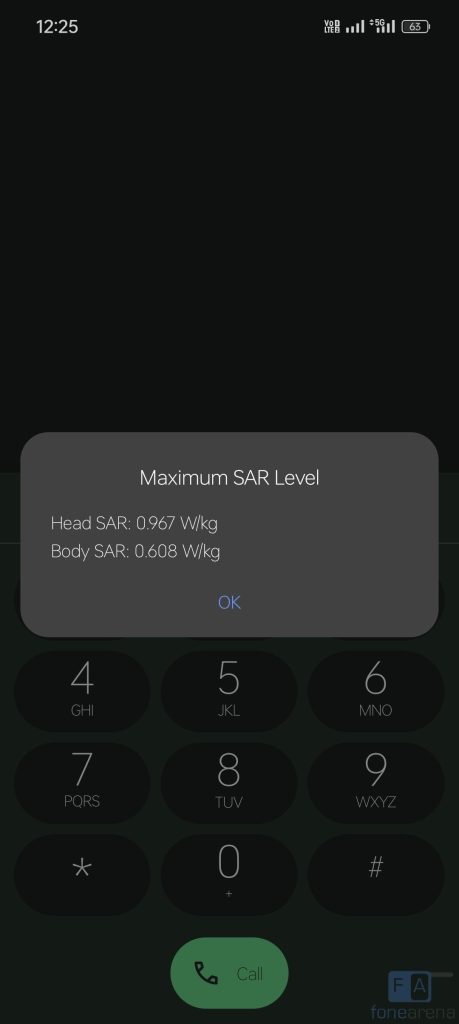
The OPPO Reno11’s body SAR is 0.608W/Kg and head SAR is at 0.967W/Kg, which is well under the limit of 1.6 W/kg (over 1 g) in India.
Performance and Benchmarks
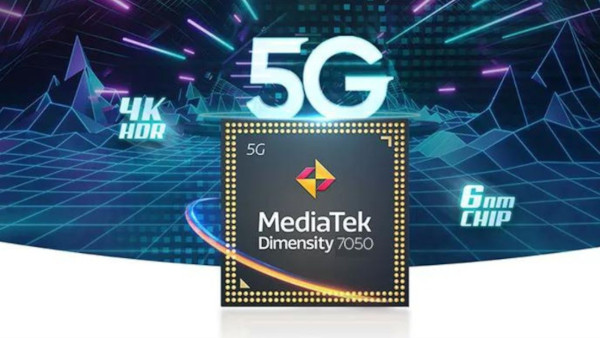
This is powered MediaTek Dimensity 7050 6nm SoC, which is just a rebranded Dimensity 1080 used in several phones. This is the same SoC used in the Reno10. It has 2 x A78 CPUs clocked at up to 2.6GHz, 6x A55 CPUs clocked at up to 2GHz. It has Mali-G68 MC4 and up to 8GB LPDDR4X RAM.
The company didn’t mention if it has any cooling. The performance is smooth without any lags, and it also offers smooth gaming performance even in graphic intensive games. When you play graphic-intensive games like COD, BGMI and Genshin Impact, it gets a bit hot, but it doesn’t get too hot to handle.
That said, check out some synthetic benchmark scores below.

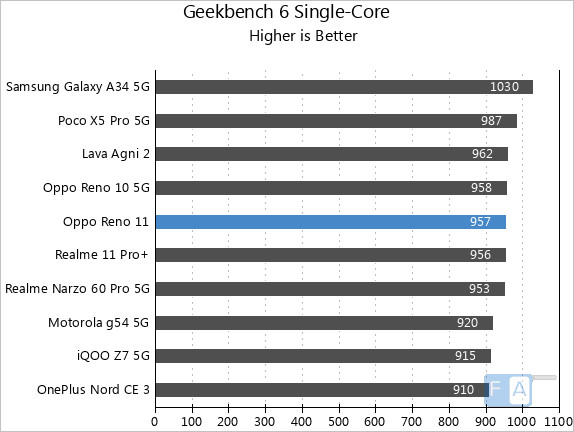
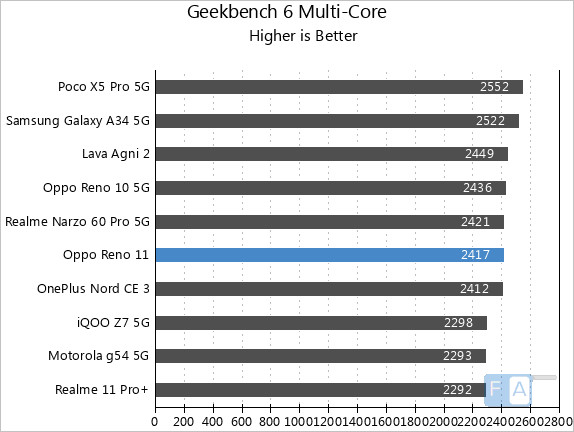
Battery life
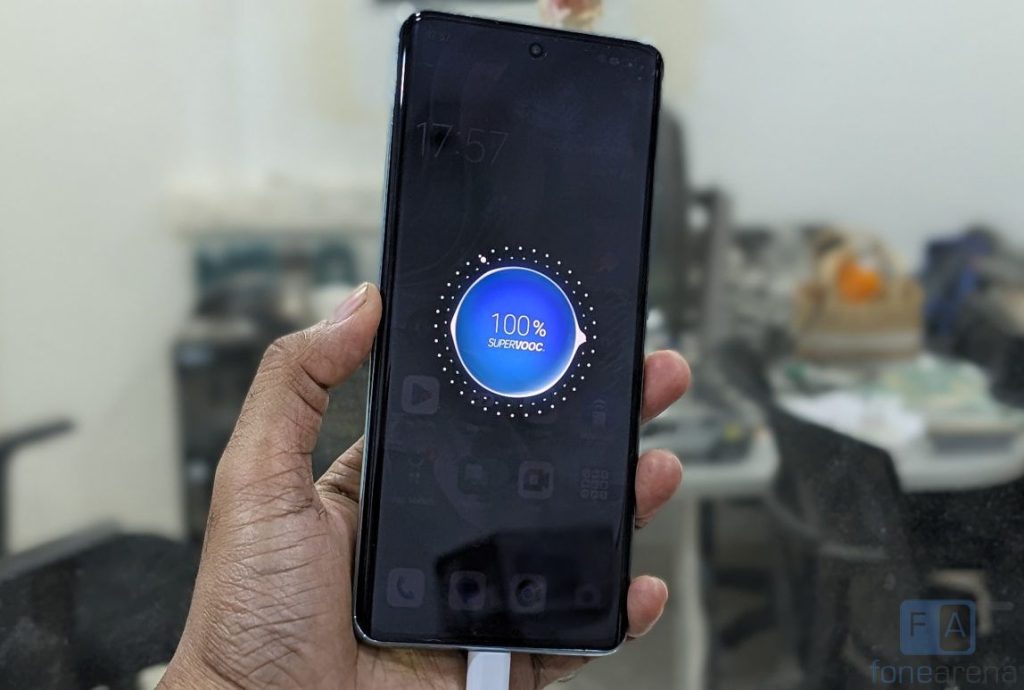
Coming to the battery life, the phone packs a 5000mAh (typical) built-in battery, same as the Reno10. It lasted me more than a day with mixed Wi-Fi and 5G use and dual SIMs. I got over 5 hours of screen on time with over a day of use on Wi-Fi and in 120Hz. Since the phone has support for 67W SuperVOOC Charge, it can charge up to 50% in about 20 minutes and up to 100% in about 45 minutes with the bundled 67W charger.
The battery health option that shows the battery capacity. There is smart charging mode and also an option to stop charging at 80%.
Conclusion
At a starting price of Rs. 29,999, the OPPO Reno11 5G is a minor upgrade to the Reno10 since it only gets a main camera upgrade, out-of-the-box Android 14 experience and the looks. The phone retains the same screen, SoC, battery and charging from last year’s model that was launched at the same price, and this time there is a 128GB model to keep the price low.
Pricing and availability
The OPPO Reno11 comes is priced at Rs. 29,999 for 8GB + 128GB model and the 8GB + 256GB model costs Rs. 31,999.
It is now available for pre-order on Flipkart, OPPO India online store and offline stores and will be available from January 25th.
Pros
- 120Hz curved AMOLED display
- Smooth performance
- Android 14 out of the box with 3 more Android updates
- Good battery life, 67W fast charging
Cons
- Same old display, SoC and battery
- Bloatware

